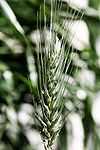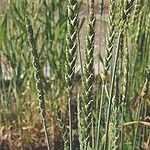Note these delivery changes for the Pesach holiday:
During the week of Chol Hamoed Pesach (Monday, April 2 and Wednesday April 4), there will be no deliveries.
Those of you who receive bi-weekly boxes – note the three-week gap!
Open Day at Chubeza: In keeping with our twice-yearly tradition, we invite you for a Chol HaMoed “pilgrimage” to Chubeza to celebrate our Open Day.
The Pesach Open Day will take place on Wednesday, April 4, the 19th of Nissan, between 1:00 PM-6:00 PM. In tradition, the Open Day gives us an ideal opportunity to meet, tour the field, and nibble on vegetables and other delicacies. Children have their own tailor-made tours, designed for little feet and curious minds, plus activities and a vast space to run around and loosen up. (So can the adults…)
On the Open Day, we also set up a produce stand where you can purchase all you need to replenish your vegetable supply.
The festivities take place in the fields on the outskirts of Moshav Bin Nun. Driving instructions are on our website under “Contact Us”
We look forward to seeing you all!
________________________________________________________
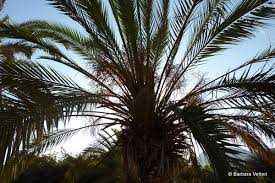
A new date delivery has arrived from Samar, just when our supply of autumn dates was dwindling. All varieties are now replenished: Barhi, Dekel Nur and Zahidi, and all are Kosher for Pesach. You are welcome to sweeten your holiday with the healthy, tasty delight of Samar dates. Order via our order system today!
__________________________________________________

Not only are the dates kosher for Pesach. Lots of other Chubeza delicacies are available for you from our associates: Juices and date honey from Neot Smadar, Green crackers and vegetable crackers, date and walnut granola, cocoa, almond and berry granola, double chocolate cookies, and ginger and cinnamon cookies, walnut fudge and brownies from Shorshei Zion; all the excellent spices from Reach HaSade; olive oil and honey from Ein Charod, and Tamir’s honey from the Golan. Lots of goodies for your holiday table or gifts for those you truly love.
Find them all in our order system.
_________________________________________________
It’s all in the Family
In honor of the upcoming Festival of Matza, and in tribute to the first representatives of our yummy spring legumes that are ripening as we speak – the amazing peas and the fava bean – let’s dedicate some words to the general major confusion in the grains and legume world of chametz: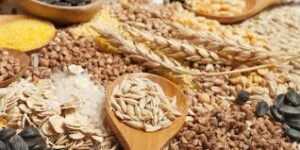
The Grain Family is a fundamental botanical family, the Poaceae family, or the Gramineae. It is one of the most important plant families to economics and human culture, essential for daily food consumption by humans (grains constitute almost every slice of bread) and animals (as fodder and pasture), as a chief source of sugar (sugarcane and corn), as building material (bamboo in Asia) and of course, as natural ornaments (lawns and more). It is a relatively young family (55-65 million years old), characterized by grass with hollow stems (canes) usually in a node formation, which grants stability and the ability to bend without breaking. As they are fertilized by the wind, grains have no need for any colorful prissy flower to attract pollinators; their flowers are characteristically green-brown-yellow, as the color of the plant itself. The grains are usually organized in spikes.
Graminae seeds are usually monocotyledon (meaning they have one-kernel sperm). This is demonstrated by the fact that their seed does not split in half. (Think about the corn or rice kernel, as compared to fava or pea seed.) Almost all of them are edible, but many varieties are so small that they’re not widely grown commercially. Another characteristic of grains, which is problematic in farming, is that most spread their seeds by bursting the spike and whirling their kernels to the wind, which becomes a problem for those who wish to reap or gather them. Over the years, (wo)man has selected and cultivated the non-explosive grains, attempting to develop larger seeds. This has resulted in today’s wheat, barley, corn and rice (as compared to the less-cultivated amaranth, for example, or even smaller species).
Within this important family, there is a “Jewish” sub-family, the one termed “the five species of grain.” These are the grains belonging to the “wheat tribe” (the Poaidae sub-family), characterized by their ability to leaven and swell. This is generated by gluten, a general term for some of the proteins typical in the various species of grain. Gluten is distinctive for its insolubility. The origin of the word “gluten” is the Latin gluttire, meaning ‘to swallow,’ because gluten changes its spatial structure when water is added and the dough is kneaded, giving the dough mechanical strength and the ability to hoard gas (created by yeast and enzymes). In the process of kneading, the gluten is developed, creating a three-dimensional structure of a net of thin elastic filaments that act to “trap” and “withhold” the gases and water vapors formed within the dough-hollow during the rising and subsequent baking. (Further details on gluten can be found here)
This group has special laws in Judaism, including, aside from Pesach issues, the blessing of Hamotsi before eating, reciting the Birkat HaMazon afterwards, and the mitzvah of “taking Challah.”
The four species of grain we use for daily consumption belonging to the gluten wheat tribe are (right to left): wheat, barley, rye and spelt. Four? But what is the fifth? What about the oats? Well, here is the big surprise: Oats do not contain gluten, nor do they leaven or swell. Professor Yehuda Felix has identified the oats of “the five species of grain” with a species of barley. He argues that it is impossible that oat is in oatmeal, since oatmeal does not contain gluten and was not known to our sages during the Talmud and Mishna.
On the opposing side, other scholars (e.g. Moshe Sachs, Mordechai Kislev, Zohar Amar) claim that small quantities of oats grew scattered among wheat and barley fields, and though it is indeed gluten-free, it does in fact leaven and is therefore included in the original five species of grain. Thus – the popular equivalent is correct.
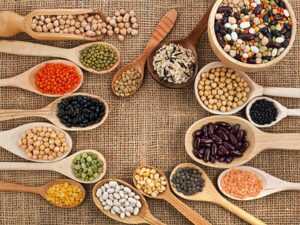
Our second family, the legumes (Fabaceae), is a very dear one to farmers. I will not extol its virtues here, but that will surely come in a future newsletter. For now, let me simply note that there is no botanical similarity between legumes and the Graminaes. When we discuss legumes on Pesach, we don’t really mean the legume family, but rather the Pesach Ashkenazi “small legumes,” a varied and odd group composed of rice, millet and corn (Gramineae family) as well as beans, hummus, fenugreek, soy, lentils, fava beans, white beans, Tamarindus Indica (Fabaceae family), sunflower seeds, mustard, buckwheat, kummel and sesame (which belong to various other families). In short, the prohibition of kitniyot on Pesach includes an assortment of all kinds of botanical grains and seeds, uncovered by any fruit skin.
And why is this? Traditionally, the prohibition dates back to a European Jewish custom over 700 years ago, whose reasons remain less than clear. This ban can be summarized by four main reasons, none of which derives from a direct Divine prohibition, but rather from doubts and misgivings:
* In Ashkenazi communities, kitniyot were used in cooking, and the rabbis did not trust the cooks’ ability to differentiate between rice and groats (women…)
* As there are various kitniyot that can produce flour, the rabbis worried that some Jews would allow themselves the use of chametz flour as well. Although in ancient periods the Rabbis were not concerned because the custom was very clear, the exile of the Jews caused sages to fear that lack of knowledge could lead to mistakes. (At least this time the woman is blameless…)
* The physical resemblance between grains and kitniyot: In both cases, these are grains stored in silos for relatively long periods of time, causing some concern that the kosher kitniyot would mix with wheat and barley seeds, and inevitably lead to cooking chametz on Pesach. The wagons leading the kitniyot to market were also used to transport grains, which might result in blending.
* Growth in the fields is related as well. Over the early Middle Ages, farmers in Europe transferred to a tri-annual crop rotation: one year they planted grains, the next legumes, and the third year the field was left fallow. This method must have created “voluntary” growth of some grains in the legume field, which might have entered the kitniyot sacks.
In light of these fears, the rabbis decided that Ashkenazim should be ‘better safe than sorry’ (I’m sure this sounds better in Yiddish), and prohibited legumes and other grains, seeds, kernels, granules and whatnot from the Pesach fare.
Thus considering that the word seder is Hebrew for “order,” in botanical terms, the Pesach Seder is far from literal. Instead of bringing order, Pesach brings a major balagan!
Hoping you are managing to find some moments of tranquility, rejuvenation, spring gaiety and joy in these pre-holiday days.
See you at the Open Day!
Chag Sameach from
Alon, Bat Ami, Dror, Yochai and the entire Chubeza team!
_____________________________________
WHAT’S IN THIS WEEK’S BOXES?
Monday: Swiss chard/spinach/kale, carrots, lettuce, cucumbers, garden or snow peas/Jerusalem artichoke, tomatoes, parsley/coriander/dill, green garlic, beets, leeks. Small boxes only: Celeriac/parsley root
Large box, in addition: Cabbage, fava beans, potatoes, onions.
Monday: Swiss chard/spinach/kale, carrots, lettuce, cucumbers, garden or snow peas/potatoes, tomatoes, parsley/coriander/dill, beets, leeks, celeriac/parsley root, onions.
Large box, in addition: Cabbage.Jerusalem artichoke, green garlic, fava beans.



